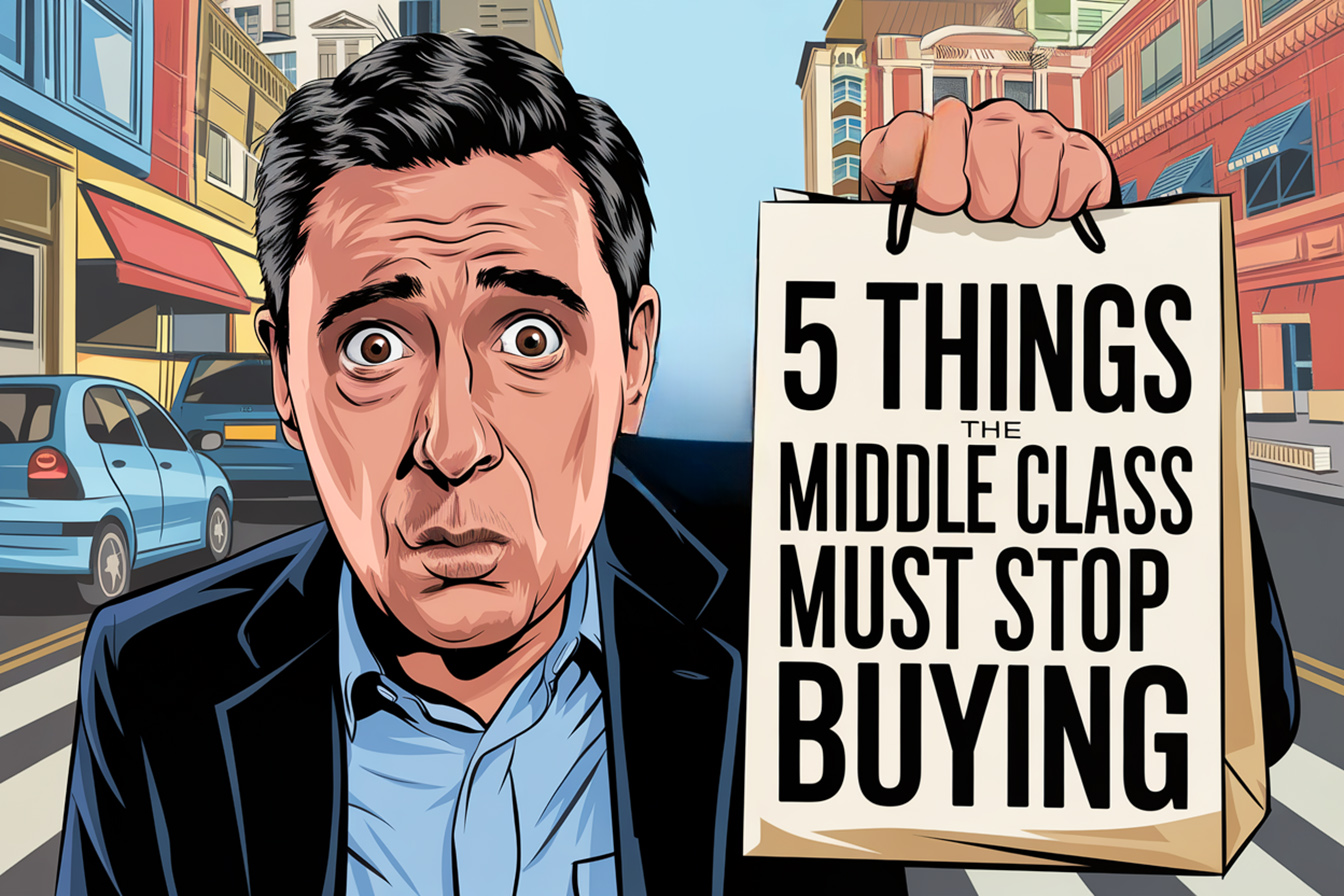As inflation continues to impact household budgets, making strategic spending decisions has become crucial for middle-class families. Here’s a detailed look at five key areas where adjusting purchasing habits can lead to significant savings in 2024.
1. The Hidden Cost of Restaurant Convenience: Why Home Cooking is Your 2024 Superpower
According to a Bloomberg report, restaurant prices have increased by 24% since January 2020, signifying a substantial rise in dining costs over the past few years. A family of four now spends an average of $64 on a casual dining experience, excluding taxes, fees, and gratuity.
This translates to approximately $256 monthly for just one weekly restaurant visit. When factoring in delivery fees, the costs climb even higher, making dining out less appealing for many families. At the same time, many customers report declining food quality and bad service experiences.
Home cooking presents a powerful alternative. The same meals prepared at home typically cost one-third of restaurant prices. A well-planned grocery budget combined with batch cooking can reduce monthly food expenses by 50-60%.
Dedicating two hours to weekend meal prep can create diverse, nutritious meals that rival restaurant quality. The key lies in strategic shopping and efficient preparation.
Investing in quality kitchen tools and learning basic cooking techniques can transform your relationship with food. A $30 investment in storage containers and a simple meal-planning routine can yield thousands in annual savings.
2. New Cars in 2024: The Luxury That’s Driving Your Finances Off a Cliff
According to Kelley Blue Book, the average price of a new car in October 2024 is $48,397, a slight increase from the previous month. The average price of a new electric vehicle (EV) in October 2024 is $56,351, with interest rates hovering around 7% for those with the best credit scores.
This translates to monthly payments exceeding $700 for many buyers. What’s often overlooked is the brutal depreciation—new vehicles lose 20-30% of their value in the first year alone.
Certified pre-owned vehicles offer a more intelligent alternative. A three-year-old model often provides 90% of the features and reliability at 60-70% of the cost. Modern vehicles routinely last beyond 200,000 miles with proper maintenance, making the “reliability” argument for new cars increasingly irrelevant.
Interest rates on new car loans have reached their highest levels in 15 years. That $48,000 vehicle financed over 60 months will cost an additional $9,000 in interest. Choosing a quality used car and investing the difference can significantly impact your long-term financial health.
3. Annual Phone Upgrades: The Tech Trap Draining Your Wallet
The latest smartphones now routinely cross the $1,000 threshold, with premium models approaching $1,500. Year-over-year improvements have become increasingly marginal, often limited to minor camera upgrades and slightly faster processors that most users never fully utilize.
Recent studies show that phones from the past two generations can handle current applications and operating systems. Extending your upgrade cycle to three or four years could save upwards of $2,000, including accessories and insurance costs.
The rise of refurbished devices offers another intelligent alternative. Certified refurbished phones from reputable sellers provide like-new performance at 30-40% discounts. These devices undergo rigorous testing and often come with warranties comparable to new units.
4. Your Daily Coffee Habit: Small Expenses with Big Financial Impact
A daily premium coffee habit now averages $5-7 per drink, potentially consuming over $2,000 annually from your budget. While coffee shops offer convenience and social experiences, the financial impact of this daily ritual has become increasingly difficult to justify.
High-quality home brewing equipment, including a premium grinder and brewing system, typically pays for itself within three months of daily use. Even premium coffee beans purchased for home brewing cost roughly $0.50-0.75 per cup, compared to $5+ at cafes.
This doesn’t mean eliminating cafe visits. Instead, consider making them intentional treats rather than daily habits. Limiting premium coffee purchases to twice weekly while brewing at home can save over $1,500 annually while preserving cafe culture’s social aspects.
5. Brand Names vs. Your Budget: Rethinking Grocery Store Loyalty
Consumer studies consistently show that store-brand products often match or exceed the quality of their branded counterparts. In blind taste tests, generic products frequently perform equally well yet cost an average of 20-30% less.
The difference becomes particularly striking in household staples. Essential items like flour, sugar, cleaning supplies, and paper products can cost up to 50% more when choosing brand names. A typical family can save $200-300 monthly by strategically selecting generic alternatives.
This doesn’t require altogether abandoning brand preferences. The key lies in identifying categories where generics truly match brand-name quality. Pantry staples, cleaning supplies, and essential personal care items offer the best opportunities for savings without sacrificing quality.
Conclusion
Making these adjustments doesn’t mean sacrificing quality of life – it’s about spending smarter and recognizing where premium prices genuinely add value. By redirecting funds from these five key areas, middle-class families can build stronger financial foundations while maintaining and even improving their lifestyle quality.
The key lies in thoughtfully evaluating spending habits and strategically reallocating resources toward building significant investment accounts.
These changes, implemented gradually and maintained consistently, can lead to annual savings of $5,000-10,000 for many households. This creates opportunities for increased savings, debt reduction, or investment in experiences and assets that provide lasting value.
The path to financial security often begins with these seemingly small but impactful decisions about daily spending habits.
